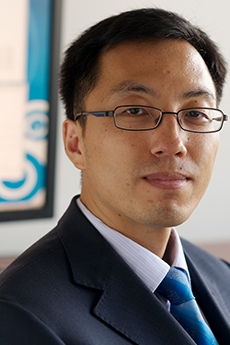In a first-of-its-kind study that unravels some of the puzzling material properties of GeSn alloy, Dr. Tianshu Li and his co-authors show that the prevailing view of GeSn alloy is not accurate. The study, “Short-Range Order in GeSn Alloy,”was recently published in ACS Applied Materials & Interface.
GeSn alloy is a key material that represents a disruptive technology for mid-infrared technology. Some of the high-profile applications of GeSn include Lidar (for example, on autonomous vehicles), night vision, and biochemical sensing. GeSn alloy is currently being intensively investigated because it not only can potentially outperform the materials used in the market, but it also is much cheaper. For example, while infrared cameras currently range in price from several hundred to a thousand dollars, infrared cameras made of GeSn can cost as little as $10, which means every smart phone can have such a device.
The study conducted by Dr. Li and his colleagues presents a finding that challenges the 30-year-long prevailing view in the field that SiGeSn alloy is a homogeneous random solid solution. This view, which assumes Ge ans Sn atoms are randomly distributed in lattice, has served as one of the foundations for interpreting and guiding both experimental and theoretical studies in the past. This study shows, for the first time, that this view is not accurate.
Dr. Li and his colleagues found there exists a subtle but important short-range chemical order in GeSn alloy that clearly distinguishes it from a random solution. More importantly, this short-range order was demonstrated to be the key to unraveling some of the puzzles in the field, including accounting for major discrepancy between theory and experiment in band gaps. The team also was able to answer a highly interesting question in the field, namely, whether GeSn alloy of the most important composition can ever be made and be stable. They have concluded that it can be.


